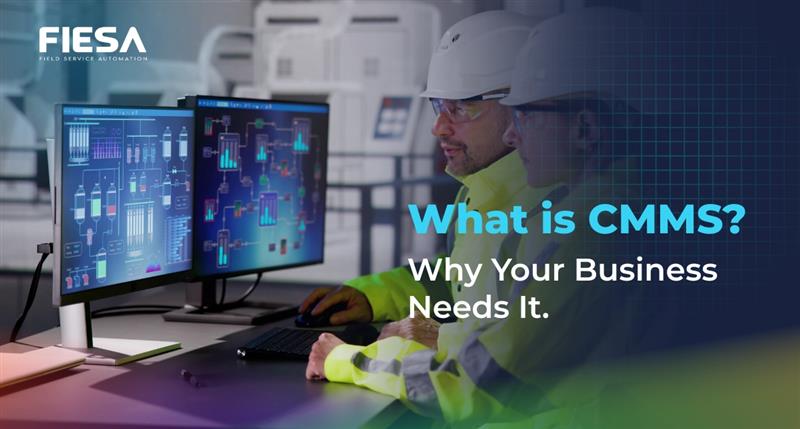
In today’s fast-paced business environment, unplanned equipment downtime or inefficient maintenance operations can lead to major losses. That’s where a CMMS – short for Computerized Maintenance Management System – comes in. A CMMS helps companies track, manage, and optimize all their maintenance activities through a centralized software solution. Whether you’re running a manufacturing plant or managing a healthcare facility, CMMS software plays a critical role in keeping operations smooth, assets healthy, and costs under control.
But what exactly is CMMS? And why has it become a must-have tool for modern businesses? Let’s break it down.
What is a CMMS System?
A Computerized Maintenance Management System (CMMS) is a software platform designed to simplify and automate maintenance operations. It allows organizations to manage work orders, track equipment performance, plan preventive maintenance, and control inventory – all from a single dashboard.
Historically, maintenance used to be reactive. Teams would fix equipment after it broke down. CMMS software changed that approach by making preventive maintenance the norm. Today, teams can schedule regular check-ups, receive alerts before failures happen, and maintain detailed records of all maintenance tasks, helping reduce downtime and prolong asset life.
Key Features of CMMS Software
Modern CMMS platforms come packed with powerful features to make maintenance efficient and predictable. Here are some core capabilities:
Work Order Management
Users can create, assign, and monitor work orders easily. Each task is recorded with details like the technician involved, the problem resolved, and the time taken.
Preventive Maintenance Scheduling
CMMS allows teams to set maintenance schedules based on time, usage, or condition triggers. This prevents breakdowns and extends equipment life.
Asset Tracking
Every machine or piece of equipment is logged into the system with maintenance history, specifications, and location. This helps in long-term planning and budgeting.
Inventory & Spare Parts Management
It helps keep track of parts and inventory levels, so you never run into a situation where you need a part that’s out of stock.
Reports and Analytics
From maintenance costs to technician performance, CMMS tools provide reports that support smarter decision-making and compliance with industry regulations.
Why Does Your Business Need a CMMS?
No matter the size or type of your business, managing maintenance efficiently is critical. A CMMS doesn’t just streamline operations – it adds real, measurable value.
Reduce Downtime
Equipment failure leads to productivity loss. With a CMMS, preventive maintenance minimizes unplanned downtime and keeps operations steady.
Increase Efficiency
With automated scheduling and digital records, your maintenance team spends less time on paperwork and more time fixing actual issues.
Lower Maintenance Costs
By catching small problems early and planning ahead, you avoid costly emergency repairs and unnecessary part replacements.
Enhance Safety and Compliance
Keeping your equipment in top shape ensures a safer workplace. CMMS also helps you stay audit-ready by keeping track of compliance-related tasks and records.
Improve Asset Lifespan
Regular servicing extends the life of machinery and reduces capital expenditure over time.
Industries That Benefit from CMMS Software
While CMMS software can be adapted to nearly any sector, it’s especially useful in:
- Manufacturing: For managing heavy equipment and assembly lines.
- Healthcare: Ensuring life-saving machines are always operational.
- Facilities Management: Coordinating maintenance across buildings and properties.
- Oil & Gas: Maintaining critical infrastructure in hazardous environments.
- Education: Keeping campus facilities safe and functional.
How to Choose the Right CMMS Software?
Selecting the right CMMS depends on your business size, industry, and specific goals. Here are a few key factors to consider:
- Cloud-based vs. On-premise: Cloud-based CMMS offers flexibility and lower upfront costs.
- Ease of use: Your team should be able to learn and use the system without complex training.
- Scalability: The system should grow with your business needs.
- Integration: Look for CMMS software that integrates easily with other business systems (ERP, IoT sensors, etc.).
- Vendor Support: Ongoing support and training resources make implementation smoother.
Real-World Example
Let’s say a manufacturing plant installed a CMMS last year. Before the system, they experienced frequent machine breakdowns, which halted production for hours. After implementing CMMS, the maintenance team could schedule regular servicing, get alerts for unusual performance metrics, and ensure that spare parts were always in stock.
The result? Downtime dropped by 35%, maintenance costs decreased by 20%, and production efficiency improved noticeably within six months.
Challenges in CMMS Implementation (and How to Overcome Them)
Like any technology, CMMS adoption comes with challenges:
- Employee Resistance: Technicians may be hesitant to switch from manual methods. Solution: provide training and show them how the system makes their job easier.
- Data Entry: Setting up the system initially requires entering a lot of asset data. Solution: start with your most critical assets and expand gradually.
- Customization Needs: One-size-fits-all rarely works. Solution: choose a flexible system that allows you to tailor workflows.
Frequently Asked Questions (FAQs)
- What does CMMS stand for?
CMMS stands for Computerized Maintenance Management System – a software tool to manage maintenance operations more effectively. - How is CMMS different from EAM?
EAM (Enterprise Asset Management) includes broader functions like asset lifecycle management, whereas CMMS focuses mainly on maintenance. - Is CMMS useful for small businesses?
Absolutely. Many cloud-based CMMS platforms are affordable and scalable, making them perfect for small to mid-sized businesses. - Can CMMS integrate with other software?
Yes, most modern CMMS platforms offer integrations with ERP systems, IoT devices, and analytics tools.
Conclusion
In 2025, having a CMMS is no longer a luxury – it’s a necessity. Whether you’re trying to reduce equipment downtime, streamline operations, or meet compliance standards, a CMMS helps you stay ahead. It brings order to chaos and gives your team the tools to manage maintenance the smart way. If you’re ready to take your maintenance operations to the next level, now is the time to explore the right CMMS for your business. Don’t wait for the next equipment failure to make the switch.
